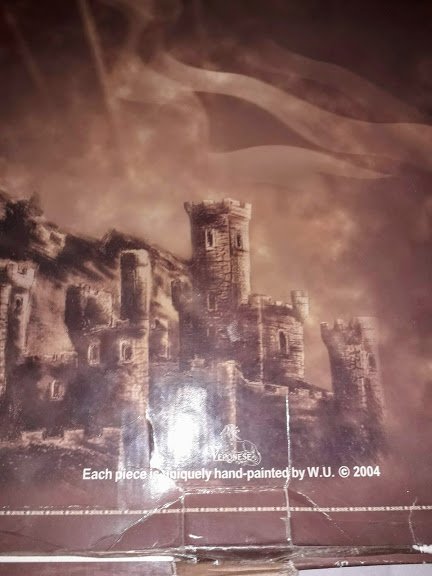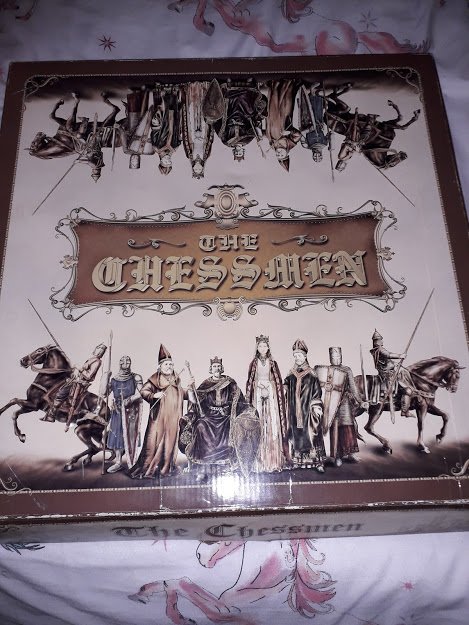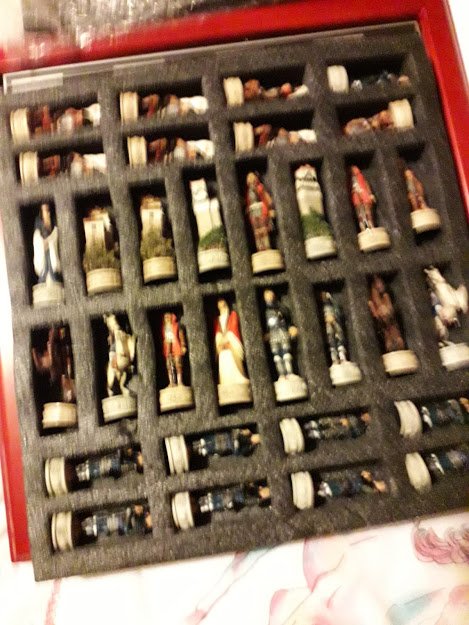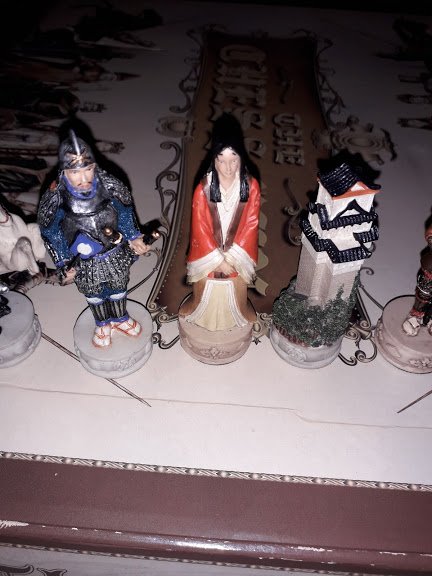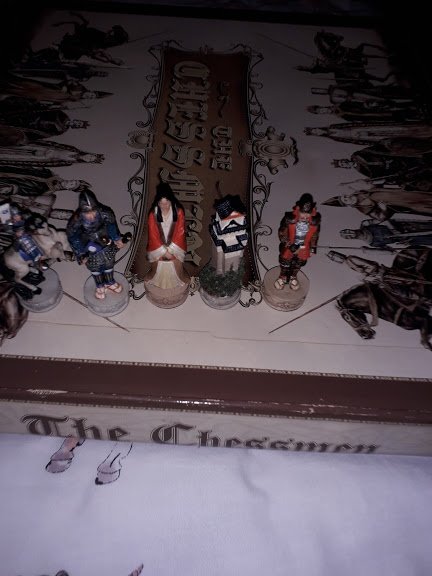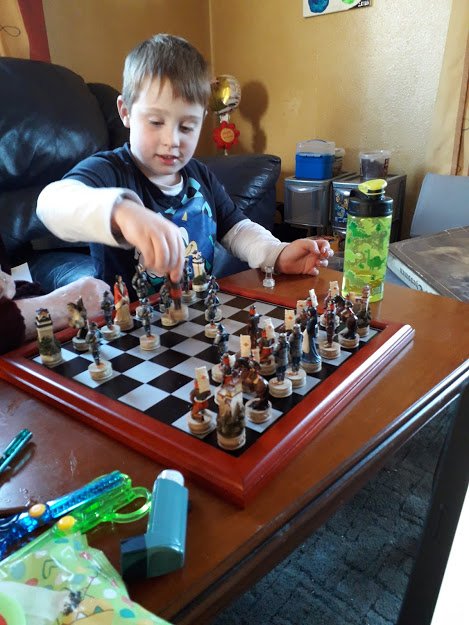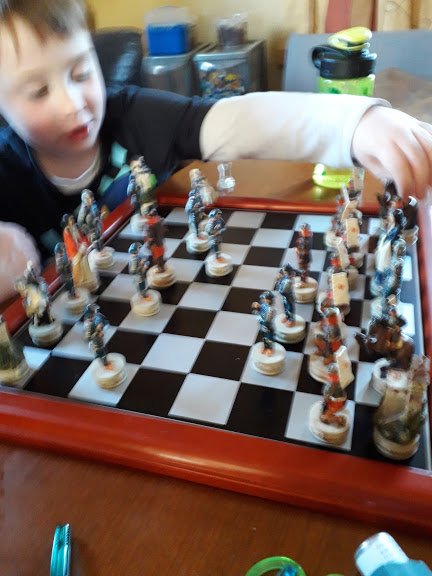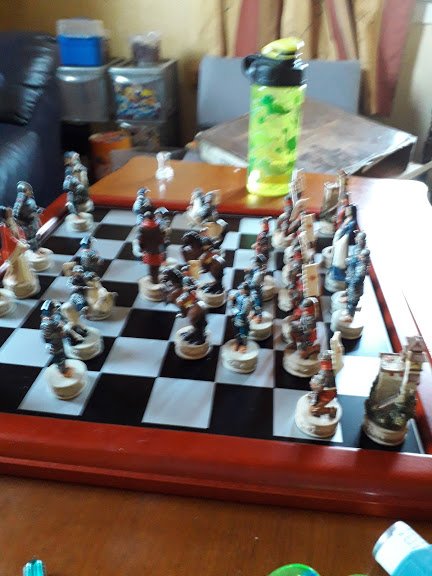-
Posts
20,847 -
Joined
-
Last visited
-
Days Won
49
Everything posted by CaaC (John)
-
World's oldest pearl found in Abu Dhabi An 8,000-year-old pearl that archaeologists say is the worlds oldest will be displayed in Abu Dhabi, according to authorities who said Sunday it is proof the objects have been traded since Neolithic times. The natural pearl was found in the floor of a room discovered during excavations at Marawah Island, off the capital of the United Arab Emirates, which revealed the earliest architecture found in the country. "The layers from which the pearl came have been carbon-dated to 5800-5600 BC, during the Neolithic period," Abu Dhabi's Department of Culture and Tourism said. "The discovery of the oldest pearl in the world in Abu Dhabi makes it clear that so much of our recent economic and cultural history has deep roots that stretch back to the dawn of prehistory," said its chairman Mohamed Al-Muabarak. The excavation of the Marawah site, which is made up of numerous collapsed Neolithic stone structures, has also yielded ceramics, beads made from shell and stone, and flint arrowheads. The "Abu Dhabi Pearl" will be shown for the first time in the exhibition "10,000 years of Luxury" which is opening on October 30 at the Louvre Abu Dhabi -- the outpost of the famous Paris museum. Emirati experts believe that the pearls were traded with Mesopotamia -- ancient Iraq -- in exchange for ceramics and other goods. They were also likely worn as jewellery. "The Venetian jewel merchant Gasparo Balbi, who travelled through the region, mentions the islands off the coast of Abu Dhabi as a source of pearls in the 16th century," the culture department said. The pearl industry once underpinned the economy of the United Arab Emirates, but the trade collapsed in the 1930s with the advent of Japanese cultured pearls, and as conflicts rocked global economies. Instead, the Gulf nations turned to the oil industry which dominates their economies to this day. https://www.msn.com/en-gb/news/offbeat/worlds-oldest-pearl-found-in-abu-dhabi/ar-AAJ5AuI
-
Haringey v Yeovil: Two men arrested in Somerset after reports of racial abuse Two men have been arrested by police investigating reports of racist abuse during Saturday's FA Cup match between Haringey Borough and Yeovil Town. The men - aged 23 and 26 - were arrested in Chard and Yeovil on Monday morning on suspicion of racially aggravated common assault. They are both in custody at a police station in Somerset. FULL REPORT
-
Real Madrid are monitoring Borussia Dortmund and England winger Jadon Sancho, 19, as well as Norway's 19-year-old forward Erling Braut Haaland, who plays for Red Bull Salzburg. (El Desmarque, via Mail)
- 610 replies
-
Eli (2019) classed as a horror but spooky as fuck, the wife was shitting bricks watching it I would give it an 8/10 with the wives reaction.
-
Legendary ancient 'lost city of King of the Gods' uncovered in Cambodia SLIDES - 1/3 An ancient "lost city" dating back to the 9th Century has been uncovered for the first time. The legendary Mahendraparvata was feared lost forever, as scientists could not even agree where it was. It was hidden in dense jungle, but the advanced aerial mapping has finally allowed its location to be identified after years of searching. But now experts say they can confidently state where temples and large palaces once stood, thanks to laser scanning. The city is thought to have been the first capital of the powerful Khmer Empire, which ruled over large swathes of South East Asia between the ninth and 15th centuries. Its name means the Mountain of Indra, King of the Gods. Although archaeologists knew of its existence from ancient records, it has long eluded them because the terrain is so difficult. Exploring the area on foot has been incredibly dangerous because the evil Khmer Rouge, which ruled over Cambodia between 1975 and 1979, laid down landmines there. It was the location of the Communist regime's last stand before it was finally defeated. It is located in the Phnom Kulen highlands, around 30 miles north of Siem Reap. Damian Evans, from the French Institute of Asian Studies in Paris, told the New Scientist: "The city may not have lasted for centuries, or perhaps even decades, but the cultural and religious significance of the place has lasted right up until the present day." Even when it was the empire's capital, it was challenging for its inhabitants because it was so mountainous. The city was built on a plateau measuring around 30 square miles and followed a grid system. Mr Evans stated: “It shows a degree of centralised control and planning. "What you’re seeing at Mahendraparvata... speaks of a grand vision and a fairly elaborate plan." https://www.msn.com/en-gb/news/offbeat/legendary-ancient-lost-city-of-king-of-the-gods-uncovered-in-cambodia/ar-AAJ1Psb
-
Not sure if this is in the right thread or not? so you Admin/Mod guys can move it if you must Edit: Thank you @DeadLinesman for moving it into the right thread FA Cup tie abandoned after reports of racial abuse at Haringey Borough v Yeovil An FA Cup tie was abandoned after Haringey Borough's manager took his team off the field amid accusations of racism, bottle-throwing and spitting. Home keeper Valery Douglas Pajetat was reportedly spat at and hit by an object thrown from the Yeovil Town end. Defender Coby Rowe was then "racially abused", according to Haringey boss Tom Loizou, who said, "there was no way I could let him continue". "If we get punished and thrown out, I don't care," he told BBC Radio 5 Live. The match, played at non-league side Haringey's home ground Coles Park Stadium, was in the fourth qualifying round of the FA Cup, with the winner set to progress to the first-round proper. "It's very distressing," said Loizou. "The abuse a few of my players got was disgusting. FULL REPORT
-
FFS, I wonder how much they made for that showpiece.
-
Hand-drawn sketch by Admiral Lord Nelson outlining his plan to defeat the French and Spanish navies at Trafalgar is found tucked into a scrapbook for almost 200 years A sketch hand-drawn by Admiral Lord Nelson showing his plan to defeat the French and Spanish navies at Trafalgar has been discovered tucked inside the pages of a scrapbook where it's been concealed for nearly 200 years. The map was found by Nelson historian Martyn Downer in the scrapbook dating from the 1830s which was recently sold at auction. The drawing was found alongside an address leaf-bearing Nelson's signature and is dated September 5 1805. The sketch, which has been donated to the National Museum of the Royal Navy in Portsmouth, shows Nelson's plan to split his fleet into three divisions to break and destroy the enemy line coming out of Cadiz harbour. FULL REPORT
-
European SolO probe ready to take on an audacious mission The European spacecraft that aims to take the closest-ever pictures of the Sun is built and ready for launch. The Solar Orbiter, or SolO, probe will put itself inside the orbit of Planet Mercury to train its telescopes on the surface of our star. Other instruments will sense the constant outflow of particles and their embedded magnetic fields. Scientists hope the detailed observations can help them understand better what drives the Sun's activity. This goes up and down on an 11-year cycle. It's sure to be a fascinating endeavour but it's one that has direct relevance to everyone on Earth. The energetic outbursts from our star have the ability to damage satellites, harm astronauts, degrade radio communications, and even knock power grids offline. "We're doing this not just for the sake of increasing our knowledge but also for being able to take precautions, for example by putting satellites in safe mode when we know big solar storms are coming or letting astronauts not leave the space station on these days," said Daniel Müller, the European Space Agency (Esa) project scientist on SolO. FULL REPORT
- 1,657 replies
-
- space exploration
- astronomy
-
(and 1 more)
Tagged with:
-
Pissing down again here and cold but I love it, the only bad thing is the wife HATES the cold so she will put the central heating on full blast and as I have mentioned in here before I feel like I am living back in Australia at summertime.
-
Fucking hell, that's a Golden Oldie of a horror film, (1983) I can remember hiring that from Blockbusters when it first came out and the wife was shitting bricks and screaming every now and then between hiding her eyes.
-
- 1,657 replies
-
- space exploration
- astronomy
-
(and 1 more)
Tagged with:
-
Huge Solar Storms 2,700 Years Ago Documented in Ancient Assyrian Cuneiform Tablets © NASA/SDO The sun releases a X2.0-class solar flare in 2014. Scientists in Japan have identified what they believe to be the earliest record of solar activity. Evidence of unusual solar activity that potentially represents three huge solar storms has been discovered in ancient Assyrian cuneiform tablets. The magnetic storms documented in astrological reports correspond to tree ring data indicating events took place around 660 BC. This potentially helps scientists to predict future magnetic storms from our sun—events that have the potential to cause major disruption to the technology systems on Earth we currently rely on. Astronomers started observing sunspots with telescopes around 1610. These are dark patches that appear on the sun's surface and are associated with solar flares—sudden explosions that send a huge amount of radiation out into space. If solar flares and coronal mass ejections (CMEs) are directed toward Earth, this radiation can result in geomagnetic storms. This is where the particles from the sun interact with Earth's atmosphere, interfering with communication systems, satellites and power grids. "These space weather events constitute a significant threat to a modern civilization, because of its increasing dependency on an electronic infrastructure," scientists led by Hisashi Hayakawa, from Osaka University, Japan, said in a study published in The Astrophysical Journal Letters. In recent years, scientists have been able to identify multiple extreme space weather events prior to 1610 by looking at radiocarbon in tree rings—including events around 775, 993 and 994 AD. Hayakawa's team focused on three events that appear to have taken place in the decades around 660 BC. "These events occurred far before the onset of instrumental observations, well outside the more modern range of wide observational coverage," they wrote. "Therefore, in order to infer the general trend of solar activity and the occurrence of CMEs, candidate auroral records have been sought in historical documents around these events. "The Babylonians and Assyrians had started astrological observations, at the latest, in the 8th century BC. Already in the 7th century BC, Assyrian kings had collected and received astrological reports from professional astrologers, to interpret the ominous meaning of observed celestial events." The cuneiform records are rectangular clay tablets with inscriptions on them. Researchers carried out a survey of auroral records kept by the Assyrians to see if there were events that correspond with scientific data regarding ancient solar activity. They found cuneiform tablets that held records of aurora dating between 680 and 650 BC. These tablets describe unusual red skies, with one mentioning a "red cloud" and another saying that "red covers the sky." The team believes these descriptions are likely the result of "stable auroral red arcs," where magnetic fields excite electrons in atmospheric oxygen atoms to emit light. The researchers also point out that Earth's magnetic north pole would have been closer to the Middle East than it is today, meaning events associated with solar activity would have been observed further south. The team say they believe these tablets to be the "earliest datable records of candidate aurorae" that support the idea there was increased solar activity at this time. Reconstructing activity on the sun thousands of years ago may help scientists predict future events. "These findings allow us to recreate the history of solar activity a century earlier than previously available records. This research can assist in our ability to predict future solar magnetic storms, which may damage satellites and other spacecraft," senior author Yasuyuki Mitsuma said in a statement. https://www.msn.com/en-gb/news/offbeat/huge-solar-storms-2700-years-ago-documented-in-ancient-assyrian-cuneiform-tablets/ar-AAIVBtu
-
Discovery of Bronze Age Warrior’s Kit Sheds New Light on an Epic Prehistoric Battle SLIDES - 1/4 A knife, chisel, arrowheads, and other gear belonging to a Bronze Age warrior have been uncovered on a 3,300-year-old battlefield in Germany. New research published today in Antiquity highlights some of the military equipment that was in use during the Nordic Bronze Age (2000 to 1200 BCE). Over 30 items belonging to a single warrior were found clumped together under a riverbank in Germany’s Tollense Valley—the site of a violent conflict involving potentially thousands of warriors some 3,300 years ago. The new evidence suggests the battle wasn’t a local affair, but rather a multiregional conflict that transpired on a wider scale than previously appreciated. The Tollense site in northeastern Germany has undergone steady excavations since its discovery in 2008, during which time archaeologists have pulled out an assortment of items and fossils associated with the conflagration—including 12,000 bits of human bone, so far traced to more than 140 individuals. These individuals were almost exclusively young males who exhibited signs of fresh and/or past trauma inflicted by weapons. Isotopic and genetic data gleaned from the bones suggested many of the men were local to the region, but some of the warriors came from parts unknown. The Bronze Age warrior’s kit, found in 2016, is helping to fill in this important gap. The 31 items were likely stored together in a cloth pouch, or perhaps a wooden case, that is now gone, having rotted away after so many years. The kit was somehow missed during the looting that typically happens after a battle, and it’s believed to contain the “typical personal belongings of a warrior who probably originated from southern Central Europe,” according to the new paper. The new analysis was led by Joachim Krüger from the University of Greifswald and included researchers from the University of Göttingen and the State Agency for Cultural Heritage in Mecklenburg-Vorpommern. The assemblage included a bronze awl with a birch handle, which the warrior would have used to puncture holes in a variety of materials. The birch handle was radiocarbon dated to 1300 to 1250 BCE, which nicely matches the age of the battle site. A knife, chisel, decorated belt box, three dress pins, arrowheads, and bronze fragments were among the other items analyzed. “This is the first discovery of personal belongings on [the] battlefield and it provides insights into the equipment of a warrior,” said Terberger in a press release, adding that the “fragmented bronze was probably used as a form of early currency.” The warrior’s kit also included three thin bronze metal cylinders. These sheets were pierced with bronze nails which were still attached at the ends, and they were rolled up in a manner reminiscent of wristbands. The authors speculate that these cylinders were fittings used for the cloth bag or wooden box, which has since disintegrated. While seemingly innocuous, these cylinders, along with other items found in the warrior’s stash, are consistent with equipment found elsewhere in Bronze Age Europe, including in southern Germany and Bohemia (now the Czech Republic). This is a potential clue that the battle drew men from far away. This “further supports the interpretation that the finds in the Tollense Valley testify to a large violent conflict of supra-regional scale,” the authors wrote in the study, adding that the “conflict should be interpreted in the framework of the social and economic development that characterised Central Europe” in the 13th century BCE. These clues are certainly intriguing, but more evidence will be needed to solidify these claims, such as more isotopic data from the warrior’s bones and teeth, which can be used to pinpoint the geographic origin. As to what prompted this bloody battle, the authors can only speculate, but its location next to Tollense River is probably an important clue. A causeway nearby “probably became an important focus for trade routes,” the authors wrote, and a likely “starting point for the battle” which may have involved upwards of 2,000 combatants. Archaeological evidence of violence uncovered elsewhere along the river bank backs up the claim that this area was a hotbed of conflict. https://www.msn.com/en-gb/news/offbeat/discovery-of-bronze-age-warriors-kit-sheds-new-light-on-an-epic-prehistoric-battle/ar-AAIRB4Z?ocid=chromentp
-
Is that you Pogba?...oh well, welcome to TF365 and the walking feet thread...
-
Nasa unveils new spacesuit for next Moon landing The US space agency has unveiled the prototype for a new spacesuit that could be worn by the next astronauts on the Moon. Nasa chief Jim Bridenstine shared a close-up look at the next-generation suits for the agency's Artemis programme. The xEMU prototype suit looks similar to ones used at the International Space Station. But Nasa said it had been improved for comfort, fit and mobility on the Moon. Mr Bridenstine also presented the Orion Crew Survival System, an orange flight suit with a helmet that will be worn by crews in the Orion spacecraft for launch and re-entry. Orion is the replacement for the space shuttle, but, unlike that system, it's designed to carry astronauts to the Moon and other targets in deep space. FULL REPORT
- 1,657 replies
-
- space exploration
- astronomy
-
(and 1 more)
Tagged with:
-
Turkish side Galatasaray are prepared to end their season-long loan deal for Southampton and Gabon midfielder Mario Lemina, 26, in January. (Fotomac, via Sport Witness)
-
As promised that's a £10 ner whacked in for whatever (running costs/prizes etc)
-
Everton's £25m summer signing Jean-Philippe Gbamin has been ruled out until January after having surgery on a thigh injury. Gbamin, 24, has been out of action since August. The Ivorian figured as a substitute against Crystal Palace on the Premier League's opening weekend then started the win against Watford on 17 August. But he broke down in training before the 2-0 defeat at Aston Villa six days later. The midfielder, signed from Mainz on 2 August, was back in light training before Everton's last league game, a 1-0 defeat at Burnley on 5 October, but suffered another setback and has now had an operation in France. It is a significant setback for under-pressure Everton manager Marco Silva as well as the Ivory Coast international, who had been brought in to fill the gap left by Idrissa Gueye's departure to Paris St-Germain. There were fears at Everton that Gbamin would need surgery when he initially suffered the injury but the club had hoped it would be avoided. https://www.bbc.co.uk/sport/football/50074905
-
-
I learnt chess when I was working in the Railways in Australia when I did some clerical work, morning, afternoon & night shift's, you would have railway guards coming in to hand in their train shifts and the majority of them were migrants from the likes of Poland, Hungry and everywhere else in Europe and they bloody knew how to play chess and I had my arse whipped many a time but I fell in love with the game then. As I have mentioned they are all hand-painted and an Oriental Chinese Warriors look.
-
Same here but my son can whip the arse off me if I played him nowadays, every now & then I will get a chess book out written by Spassky and a lot of his games he played against former greats like Fischer, Bronstein, Larsen and play them on this chessboard, it passes the time away, our daughter bought me the chess set a few years back and they are all hand-painted pieces and worth a few quid.
-
Well, I taught our son & daughter how to play chess when they were young so I thought I would try and teach wee Kaiden, not bad so far but I had to explain to him its not a battle game with all the chess pieces fighting each other...he is slowly learning after I told him his Knight does not have to hit the Bishop and send him flying off the board.
-
Archaeologists unearth 20 well-preserved wooden coffins in Egypt deemed to be the 'biggest most important discovery' in years SLIDES - 1/4 Archaeologist have stumbled upon what is deemed the 'biggest and most important' discovery in years near the Egyptian city of Luxor. At least 20 well-preserved, vividly painted wooden coffins have been unearthed in the ancient town of West Thebes. The treasure trove includes tombs dating back to the Middle, New Kingdom and the Late Periods, which took occurred in the years 1994 B.C. to 332 B.C. Experts have provided few details of the discovery, but have shared stunning pictures of the vibrant coffins with their vivid inscriptions and paintings, according to AP. The coffins which are considered one of the 'biggest and most important' discoveries in recent years are found in the Asasif Necropolis. The area is called the Asasif Tombs because it is surrounded by burials. It sits between the Deir al-Bahri and the Tombs of the Nobles, and next to the Temple of Hatshepsut on the West Bank of Luxor, reports AncientPages.com And earlier discoveries had found tombs belonging to Anch-Hor, Kheru-Ef, Montuemhet, and Pabasa. Beneath the sandy grounds are underground rooms and a gallery leading to the tomb of Kheru-Ef during the reign of Amenhotep III. At first, this period in Egypt was first ruled by The ministry says it will release further details at a news conference on Saturday. Less than a week ago, archaeologists made a discovery inside a coffin that was also astounding -- the oldest copy of a 'map for the soul to attain eternal life'. 'The Book of Two Ways' was supposed to help the deceased navigate through a dangerous landscape of fiery lakes and knife-wielding demons to make it to the realm of Osiris. The burial shaft housing the coffin was unearthed in 2012 but has now been found to have been constructed 4,000 years ago. The engravings have also revealed the coffin’s inhabitant is not an overlord, but an elite woman. ‘The Book of Two Ways’ refers to two paths that zig-zag a dangerous route through obstacles and demonic entities towards ‘Rostau’ or the realm of Osiris. It was believed that anyone who laid on the body of Osiris would never die. And now it is determined that the etching found on the side of the coffin is the oldest copy known to man. The ancient map for the dead is etched in two wood panels and although versions have been found on other coffins, this is the oldest in history. https://www.msn.com/en-gb/news/offbeat/archaeologists-unearth-20-well-preserved-wooden-coffins-in-egypt-deemed-to-be-the-biggest-most-important-discovery-in-years/ar-AAIRGbu








.thumb.png.d384fe76e257217cfef010d448cd2a19.png)
.png.17b8899f1a8eb6fc1becb78859f318c9.png)
.thumb.png.76fff940dd3ec0b1f5269ca95be18155.png)





.thumb.png.c7117541cc9a1507acdb4eb8dd9f25cb.png)




.png.954217c0624d477c0346534e87c3b87f.png)
